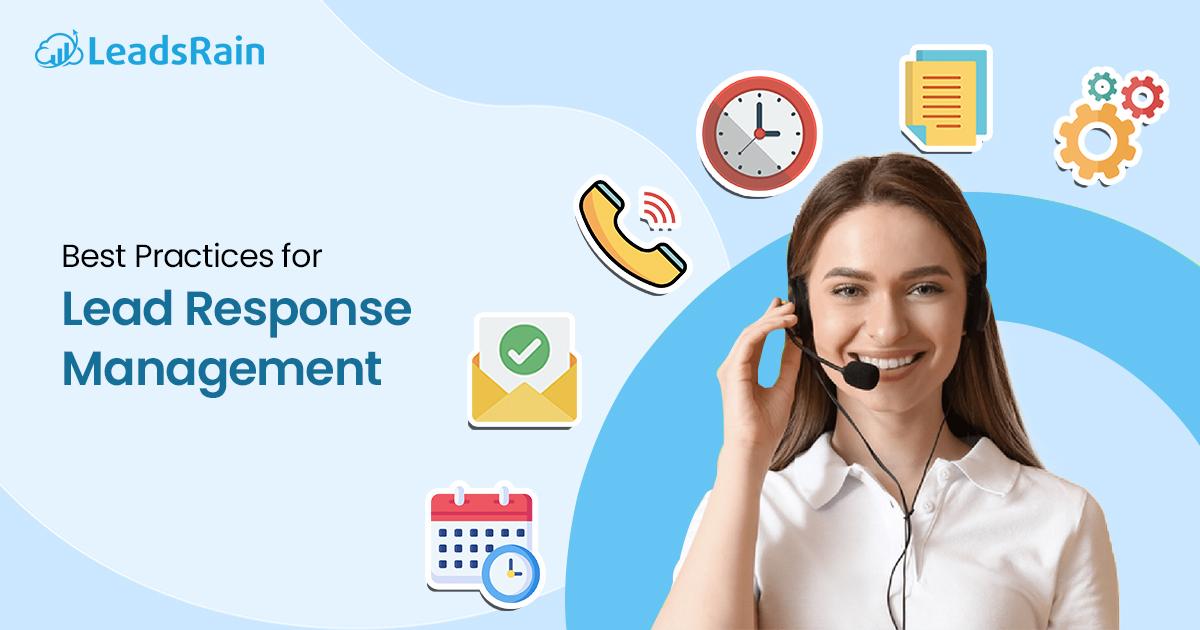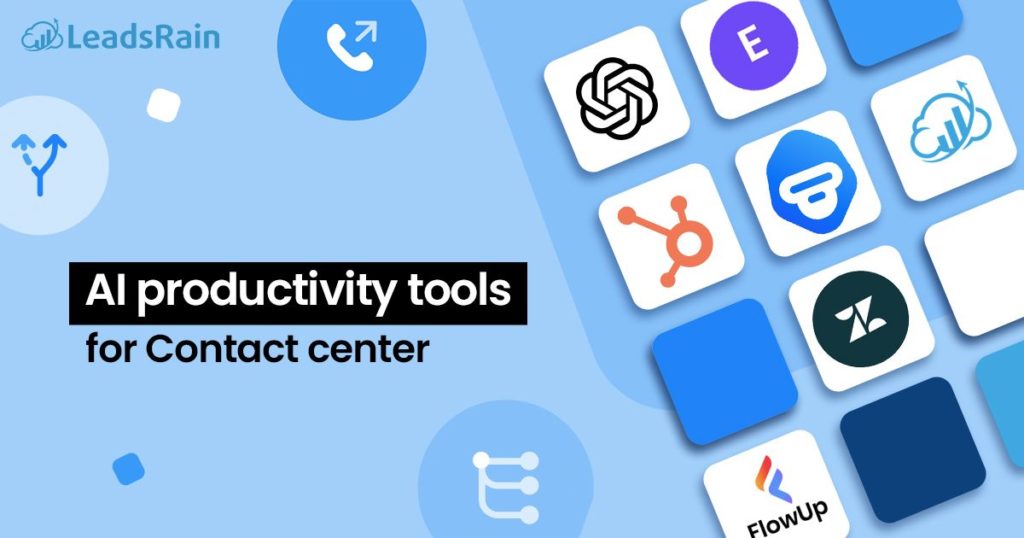Competition is rising and businesses are worried about gaining effective lead responses. In this blog, we have covered all your problems in just one solution by providing you with some best practices for lead response management. Remember, promptness is the key to success. So, prepare to learn and implement your lead response to the next level. Let’s jump in!
Briefing on Lead Response Management
Lead Response Management is a perfect set of tools, practices, methodologies, and techniques that are designed for responding to your customers in a specific period. It’s all about handling and responding to leads that come from multiple sources like websites, phone calls, and emails.
The management tasks can include things like setting up automated responses, allocating leads to appropriate employees, keeping track of and recording the performance of each lead response, and making changes accordingly for upcoming prospects.
Responding to leads in optimal hours is important for better customer satisfaction and CX. Simply, lead response time signifies businesses’ total time to contact prospects (it may be via outbound/ inbound channels).
As per statistics observed, lead conversion rates are likely to increase by 391% when responding to leads in the first minute. Around 78% of leads are more likely to purchase from businesses that respond to them first.
According to Harvard Business Review, “Out of 224 companies, only 25% of companies responded within 24 hours, while 25% had not responded”.
Lead response management is making out more possible leads and turning them into paid customers.
Understanding the importance of Lead Management
Effective lead management allows you to properly allocate resources like time, effort, and a set budget. Along with that, you can focus on time on high conversion rates and optimizing productivity and ROI through qualifying leads. Lead management is essential as it helps you to efficiently streamline your sales process.
If your lead management process is well equipped and managed, you gain valuable insights and data, which further empowers your business to make an informed decision. This process has a direct impact on revenue generation. Imagine you are creating a favorable impression that lasts till the end.
Lead response management permits you to stay well-organized and customer-centric, demonstrating professionalism towards your customers.
Overall, lead management is an essential part of any business for resource allocation, high conversion rates, better customer experiences, revenue generation and data analysis, and acquiring dynamic power in competitive markets.
9 Best Practices for Lead Response Management
Step into the world of powerful and cutting-edge practices to improve lead responses. Multiple tools and systems can be utilized along with some strategies. So, let’s uncover these systems and start the implementation process.
1. Make investments in Automated Technology
Investing in automated technology is one of the fantastic practices for lead response management. Leverage automation tools and technology to streamline your lead response process by backing them with instant replies.
Automated technology provides you access to prioritize leads, send personalized responses, and track and record each customer interaction for better performance.
Consider email marketing tools or chatbots for instant customer interaction and efficient lead nurturing.
It’s a great step towards maximizing your lead response management!
2. Offer them conversational contact experience
Try to offer them as much of a conversational experience as possible for better customer satisfaction. You gain attention and interest in your business through a personalized approach and interactive conversation.
It’s important to be responsive and attentive towards their needs and preferences and thus ensure positive building relationships from the very first interaction.
Maintain friendly conversation through live chat, phone calls, messages, or social media messaging, just focus on a positive, conversational environment.
Thus, establishes trust and enhances the likelihood of converting leads into paying customers.
3. Keep up-to-date with all your lead data
Try to regularly review and update lead data in your customer relationship management (CRM) system to maintain efficiency and accuracy. CRM ensures that all your relevant details regarding your lead like contact information, previous interaction history, and specific interests and requirements are well-captured and stored.
By keeping up-to-date in your CRM system, you confirm the chances of providing timely and personalized communication and thereby enhance the overall lead response experience.
4. Think about the integration of automation tools
Integrating automation tools with your systems can greatly increase your efficiency and effectiveness. Let’s walk through a few automation tools for implementing lead response management practices.
These are; lead-capturing routing automation tools, automated lead nurturing campaigns, automation tools for pre-planned email scheduling like drip campaigns, and seamless data synchronization tools like CRM.
These automation tools will ultimately save you time and ensure timely communication.
5. Response to leads promptly
Demonstrate commitment by responding to leads promptly. Try to respond to them as soon as possible for better results and higher conversion rates.
Your promptness shows more professionalism towards your work and will create a positive impression of your business.
You can set automated lead notifications to send instant replies or set reminders to establish consistent processes.
6. Personalize communication based on individual needs
Personalizing communication will permit you to build strong and effective connections with your prospects. Enables you to cater to their specific requirements according to their preferences.
To know their needs and requirements, you must collect as much relevant information as possible, like their choice/preferences and history of previous interaction with your business, and then customize your message accordingly.
As per recent statistics, 76% of customers are more likely to be comfortable with companies that are gathering their data for personalization.
This will showcase that your company values each lead as an individual and deeply understands their unique needs.
7. Opt for multiple communication channels
Multiple communication means utilizing various channels such as emails, live chat, social media, and text messaging to manage and respond to leads or inquiries effectively.
By implementing various communication channels, you ensure that your customers get multiple options to reach out to you, ultimately increasing the chances of instant response and enhancing customer satisfaction.
Simply just implement an omnichannel system for managing better lead response.
8. Measure analytics and optimize response management
This practice involves optimizing data and valuable insights to enhance your lead response strategies. Through measuring and optimizing performance, you can efficiently identify areas of improvement and thus increase lead conversion rates by making necessary changes accordingly.
Some ways that can help you achieve your lead response optimization are tracking response timings, segmenting leads based on various factors such as interest, buying pattern, etc, CRM integration, and collecting feedback and surveys.
9. Make a habit of follow-up for better credibility
Do you want to show commitment towards your excellent customer service?
Start following the practice of “timely follow-ups”, and try to keep aiming to respond within 24 hours-48 hours. Demonstrate attentiveness and reliability anyhow.
You can also employ tools and systems for follow-up automation reminders. Making follow-up a habit shows that you are dedicated to understanding their needs and building credibility.
This way, you turn your prospects into loyal customers.
Conclusion
It’s time to achieve greater success in today’s business environment. With these strategies, you will be well-equipped and trained to build credibility, nurture leads and provide instant responses promptly. Embrace these best practices and raise your lead responses toward success. Reap the rewards!




